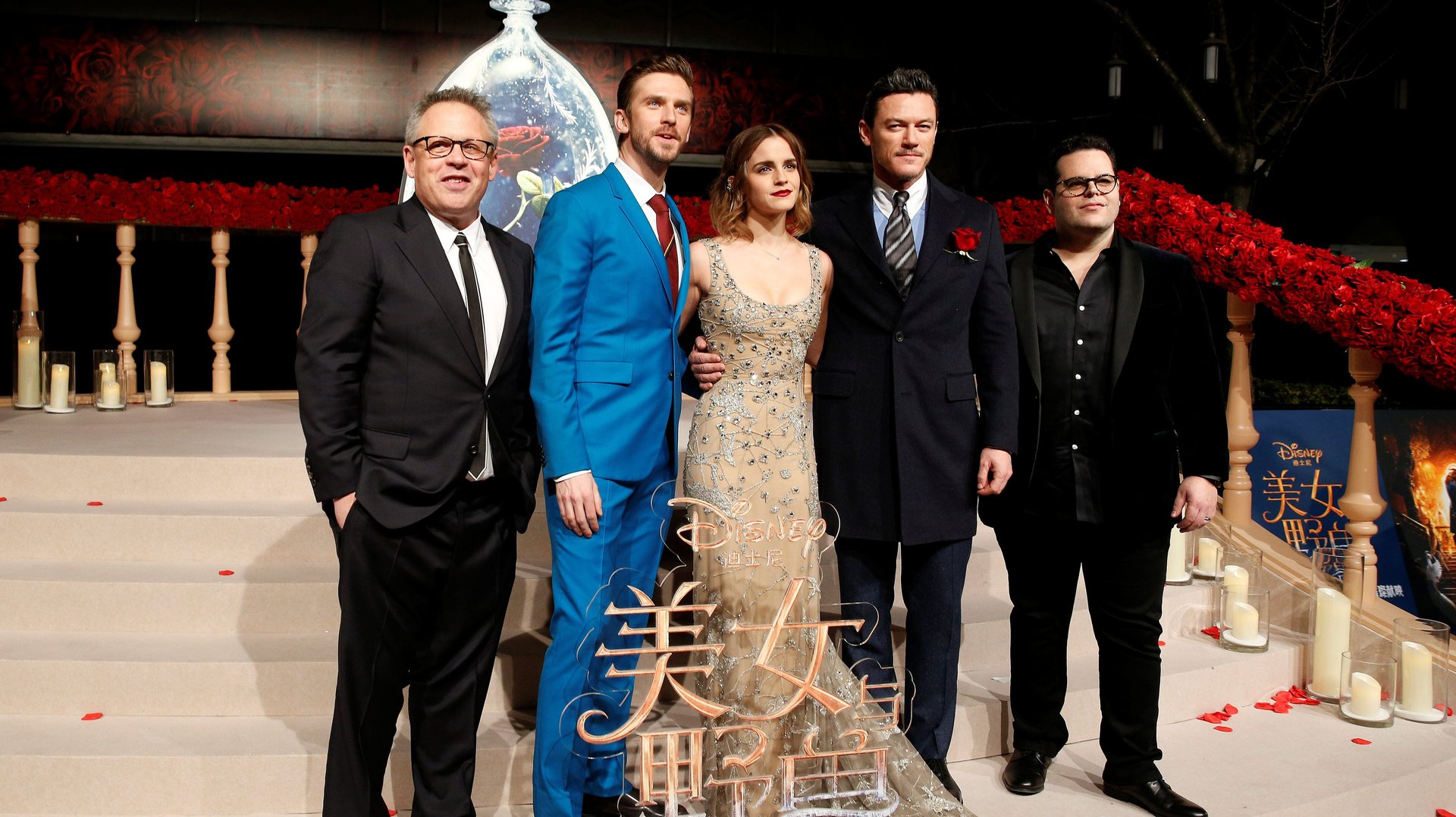Disney’s first “exclusively gay moment” sounds less progressive than literally all its other movies
Word came today that Disney’s live action version of Beauty and the Beast will feature a gay moment. Or, to be clear, an “exclusively gay moment,” as described by the movie’s director.


Word came today that Disney’s live action version of Beauty and the Beast will feature a gay moment. Or, to be clear, an “exclusively gay moment,” as described by the movie’s director.
Those three words stirred tears-of-joy emojis from parents of gay children (and the straight actor who played the gay character).
What we know about this gay moment so far does not sound particularly revolutionary, however. Bill Condon, the openly gay director of the film, which opens March 17, told Attitude magazine that the character of LeFou, played by Josh Gad, will be inwardly wrestling with a crush on his friend: the more masculine, narcissistic, bro-ish (and apparently straight) Gaston.
“LeFou is somebody who on one day wants to be Gaston and on another day wants to kiss Gaston,” Condon said. “He’s confused about what he wants. It’s somebody who’s just realizing that he has these feelings. And Josh makes something really subtle and delicious out of it.”
In a clip that has been released from the film, we see LeFou gleefully serenading the egotistical Gaston (Luke Evans) to lift his spirits:
Many were quick to point out the limitations of this scenario as a sign of progress for LGBT acceptance:
If Beauty and the Beast disappoints, Disney’s back catalogue is filled with characters that have been touchstones for LGBT viewers. Condon called Gad’s performance “really subtle.” But audiences have come to expect anything but subtle portrayals in the coded gay characters that have become fairly standard for Disney, a company known for its LGBT-positive policies. As the Atlantic explained in 2014, several Disney movies have featured winking messages about inclusivity, seemingly intentionally. Films such as Pinocchio, Dumbo, and Pocahontas feature characters who don’t conform to norms about gender or appearance and are eventually rewarded for it. Frozen has been called the company’s most progressive film ever.
The original, animated version of Beauty and the Beast, produced in 1991, was already a meaningful film to the gay community, partly because of its lyricist, Howard Ashman, who died of AIDS before the movie was released, and who Disney famously thanked at the end of the movie for giving “a mermaid her voice, and a beast his soul.” In the animated movie, LeFou’s attraction to Gaston (which seems to trap him in a battered spouse role) is decidedly unsubtle:
In other words, designating a character who is literally “the fool” and in love with a straight man to deliver Disney’s historic first openly gay moment is not only a small step; in this story, it’s old news.
Bumbling, feminine sidekick characters who enhance a macho character’s manliness were common in silent films of the 1920s, as Vice points out. For Disney, a proud gay hero or heroine or an actual same-sex relationship would have been a true milestone. Why the baby steps?
Then again, Condon and Disney have only shared selected tidbits so far. The director also said the LeFou subplot has a payoff at the end, though he was short on details to avoid any spoilers. “It is a nice, exclusively gay moment in a Disney movie,” he promised.